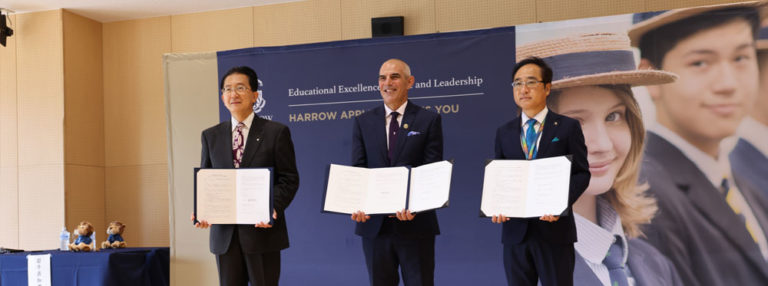Creativity, once considered a skill reserved for artists and designers, is now widely recognised as essential for future success, particularly in young learners. In an age shaped by AI, global uncertainty, and rapid change, creativity has emerged as a vital tool for navigating the unknown. It is no longer a niche skill, but a core competency that people draw on every day.
Yet studies suggest that today’s young learners are experiencing a decline in creative thinking, a trend that has become a growing concern for educators and researchers alike. The ability to think creatively empowers students to approach problems with flexibility, adapt to shifting circumstances, and generate new solutions in unfamiliar situations. If we want to prepare young people to thrive in a complex world, we must ensure that education systems are designed to foster – not stifle – creative thinking.
At Rugby School Japan, this belief is embedded in the curriculum. Through purposeful engagement with Design and Technology, pupils are encouraged to explore multiple strands of creative learning, from design thinking to problem-solving and visual communication. These experiences help students develop not only their creativity, but the confidence and curiosity to apply it meaningfully.
Design Thinking Through Our Board Game Project
Our Year 8 pupils, while exploring the key disciplines in Design and Technology, took on an imaginative and thought-provoking challenge: to design and produce their own board games. Tasked with focusing on three key themes, (graphic design, resistant materials, and textiles), our pupils undertook this project under the guidance of Ms. Nobre, Rugby School Japan’s Head of Design and Technology. In addition to providing an opportunity for creativity, this project also acted as a gateway to some of the fundamental principles of design thinking – ideation, experimentation, and collaboration.
To create a fully functioning board game, pupils had to balance aesthetics with strategy, considering not only how their game looked, but how it played. Typography, colour theory, layout, and user interaction all came into focus as pupils worked to create a consistent and engaging visual identity across every element, from cards and dice to pawns and packaging.
The biggest challenge? Designing the game mechanics themselves. Developing a strategy that was both enjoyable and functional required experimentation, collaboration, and a willingness to revise and refine. “Total design is intuitive and simple,” Ms Nobre reflected, “and you don’t even realise that.”
A highlight of the project was the product testing session, where Year 7 pupils were invited to play and review the Year 8 games. Acting as user-testers, they offered structured feedback on gameplay, design clarity, and overall engagement. For the designers, this was a crucial moment: seeing their creations come to life and experiencing how users actually interacted with them brought abstract design concepts into sharp focus. It also reinforced the idea that successful design is an ongoing process of feedback and revision.
By embedding creativity and design thinking in playful and relatable contexts, our pupils are cultivating skills that go beyond the classroom. Developing their creativity enables our young learners to become better problem-solvers, instils confidence in their innovative abilities, and equips them to address real-world challenges with inventive solutions.



